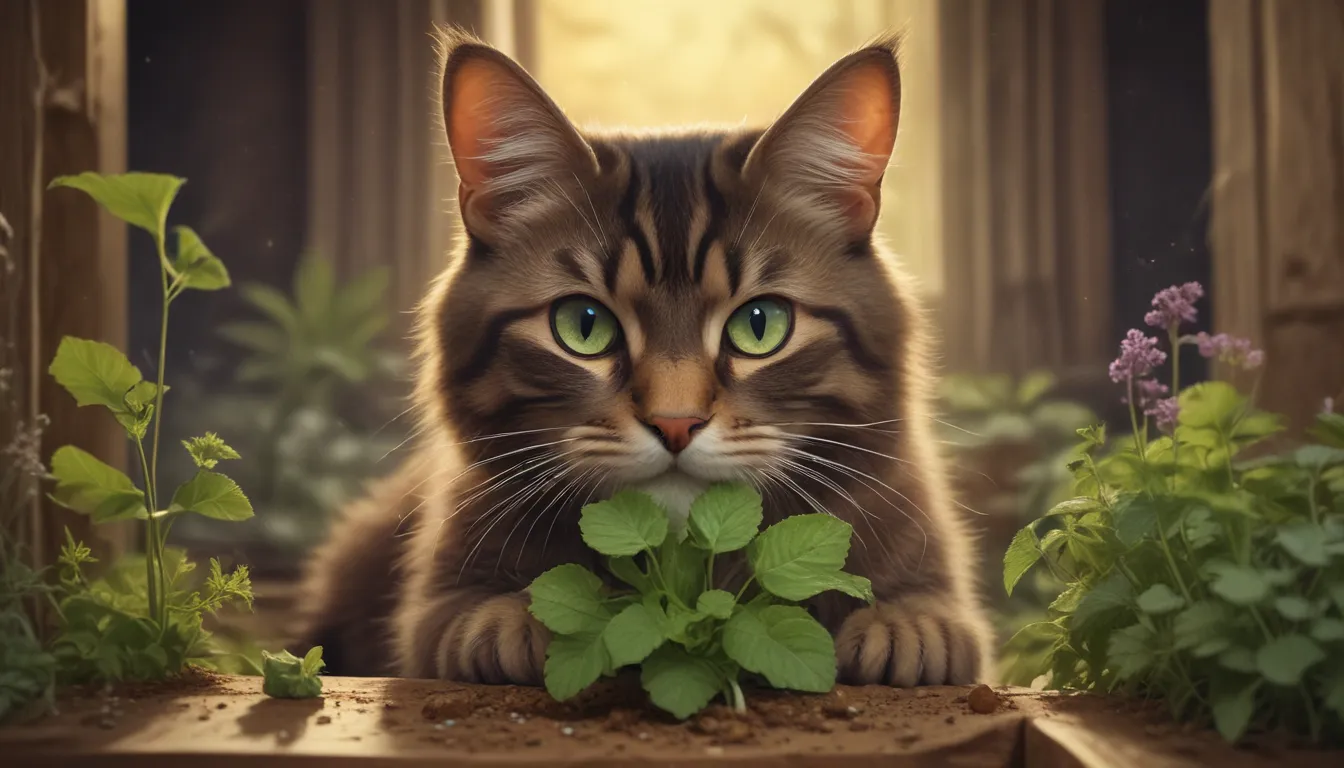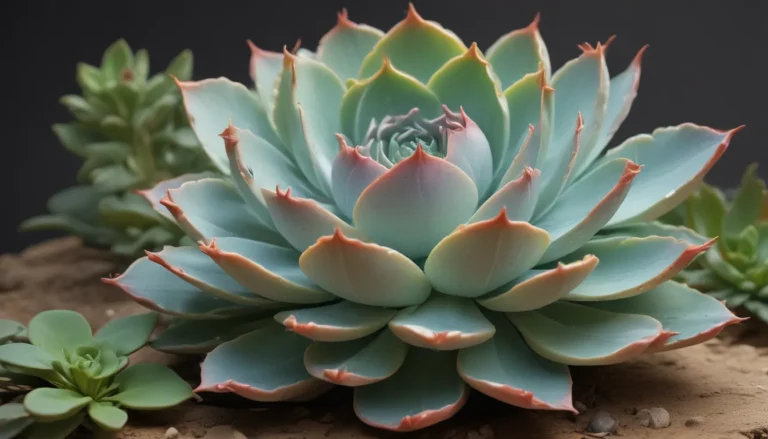The pictures we use in our articles might not show exactly what the words say. We choose these pictures to make you interested in reading more. The pictures work together with the words but don’t take their place. The words still tell you the important facts.
Are you ready to embark on a captivating journey into the world of catnip? Dive into the enchanting realm of this versatile herb, known scientifically as Nepeta cataria, that has intrigued both humans and felines for centuries. From its origins in Europe and Asia to its diverse uses and effects, catnip has cemented its place as a beloved botanical wonder. Join us as we unravel 20 intriguing facts about catnip, exploring its history, properties, and the myriad ways it has left its mark on the animal kingdom and human society.
The Enchanting Member of the Mint Family
Catnip, a perennial herb belonging to the mint family Lamiaceae, stands out for its distinctive effects on felines, garnering attention from pet owners and nature enthusiasts worldwide. Its aromatic leaves and stems contain a compound called nepetalactone, which triggers a range of reactions in cats, from euphoria to relaxation.
A Journey Through Europe and Asia
Originally native to Europe and Asia, catnip has ventured across the globe, finding its way into gardens and landscapes far and wide. With its adaptability and resilience, catnip has become a cherished addition to both indoor and outdoor spaces.
A Rich History of Human Use
For centuries, catnip has been prized for its medicinal properties and aromatic qualities. From traditional herbal remedies to modern applications in aromatherapy, catnip has maintained a significant presence in human culture, offering a range of benefits beyond its appeal to felines.
A Natural Insect Repellent
Beyond its allure to cats, catnip serves as a potent insect repellent, warding off mosquitoes, flies, and other pests with its essential oils. This natural pest control solution makes catnip a valuable asset in maintaining a pest-free environment.
From Garden to Teacup
Catnip leaves can be infused in hot water to create a soothing herbal tea known for its calming effects. Whether enjoyed for relaxation or mild discomfort relief, catnip tea offers a delightful way to unwind and indulge in nature's bounty.
Thriving Through Minimal Care
As a low-maintenance plant, catnip is a resilient herb that requires minimal attention to thrive. Its ability to flourish in various growing conditions makes it a popular choice for gardeners and herbal enthusiasts seeking a versatile and easy-to-grow herb.
A Haven for Bees and Butterflies
The fragrant flowers of the catnip plant attract a bustling array of pollinators, from bees to butterflies, enriching garden spaces and providing essential nourishment for these beneficial insects. Catnip's role in promoting biodiversity highlights its significance in creating vibrant ecosystems.
Calm Amidst the Chaos
While catnip is renowned for its stimulating effects on cats, it has a contrasting, calming impact on humans when consumed as a herbal infusion. Catnip tea is believed to promote relaxation and tranquility, offering a soothing break from the hustle and bustle of everyday life.
Beyond the Kitchen
Catnip leaves, with their subtle minty flavor, can be incorporated into culinary creations, adding a unique twist to dishes and beverages. From enhancing salads to flavoring sauces, catnip's culinary versatility makes it a delightful herb to experiment with in the kitchen.
Healing Traditions
In traditional herbal medicine, catnip has been revered for its healing properties, addressing ailments such as digestive discomfort and nervous tension. Its longstanding role in natural remedies speaks to its efficacy and value in supporting overall wellness.
The Art of Preservation
To prolong its potency and aroma, catnip can be dried and stored for future use. This preservation method ensures year-round access to the herb's benefits, whether for herbal preparations or as a fragrant addition to homemade projects.
Playful Encounters with Felines
Due to its captivating effects on cats, catnip is a popular choice for inclusion in pet toys, scratching posts, and accessories. Enhancing the play experience for felines, catnip adds an element of excitement and engagement to their daily routines.
Crafting Connections at Home
The aromatic leaves and stems of catnip can be utilized in DIY projects, such as crafting herbal sachets, potpourri, and scented pillows. These handmade creations infuse homes with a natural and fragrant touch, adding a sense of warmth and tranquility to living spaces.
The Many Names of Catnip
In addition to its familiar name, catnip is also known as "catmint" due to its strong appeal to cats. This alternative moniker reflects the plant's historical association with feline behavior and preferences, highlighting its enduring charm and allure.
Resilience in Adversity
Catnip's ability to thrive in drought conditions underscores its resilience and adaptability as a garden plant. Ideal for regions with limited water availability, catnip showcases its tenacity in the face of environmental challenges.
Harnessing the Power of Essential Oils
The leaves and flowers of the catnip plant contain essential oils prized for their aromatic qualities and potential therapeutic benefits. Extracted for use in aromatherapy and herbal remedies, these oils contribute to catnip's multifaceted appeal and utility.
Nurturing Garden Harmony
In companion planting, catnip plays a vital role in attracting beneficial insects and repelling pests from neighboring plants. This natural pest management strategy fosters a balanced and thriving garden ecosystem, promoting harmony and biodiversity.
Bridging Worlds of Wellness
With its rich history, diverse applications, and captivating effects on cats, catnip serves as a beloved herb that connects the realms of human and animal well-being. Its enduring popularity underscores its significance in herbalism and pet care, fostering a bond between nature and nurture.
Embracing the Allure of Catnip
In conclusion, catnip stands as a captivating and versatile plant that continues to enchant and enrich our lives. Whether as a source of entertainment for cats or a soothing herb for humans, catnip embodies the wonders of nature and the enduring bond between humans and animals. As we delve into the mysteries of catnip, we gain a deeper appreciation for the contributions of this beloved herb to our well-being and the world around us.
FAQs
What are the common uses of catnip?
Catnip is primarily known for its effect on cats, eliciting playful and euphoric behavior when they encounter it. However, catnip has also been used in traditional medicine to alleviate digestive discomfort and promote relaxation in humans.
Is catnip safe for cats?
Yes, catnip is generally considered safe for cats and can provide entertainment and stimulation. However, it is recommended to use it in moderation to avoid overstimulation in some cats.
Your Trusted Source of Information
Our dedication to delivering reliable and engaging content is at the core of our mission. Each fact presented on our platform is sourced from real users like you, ensuring a diverse range of insights and information. Our team of editors meticulously reviews each submission to maintain the highest standards of accuracy and authenticity. Trust in our commitment to quality and integrity as you explore the world of catnip and uncover its hidden wonders.






